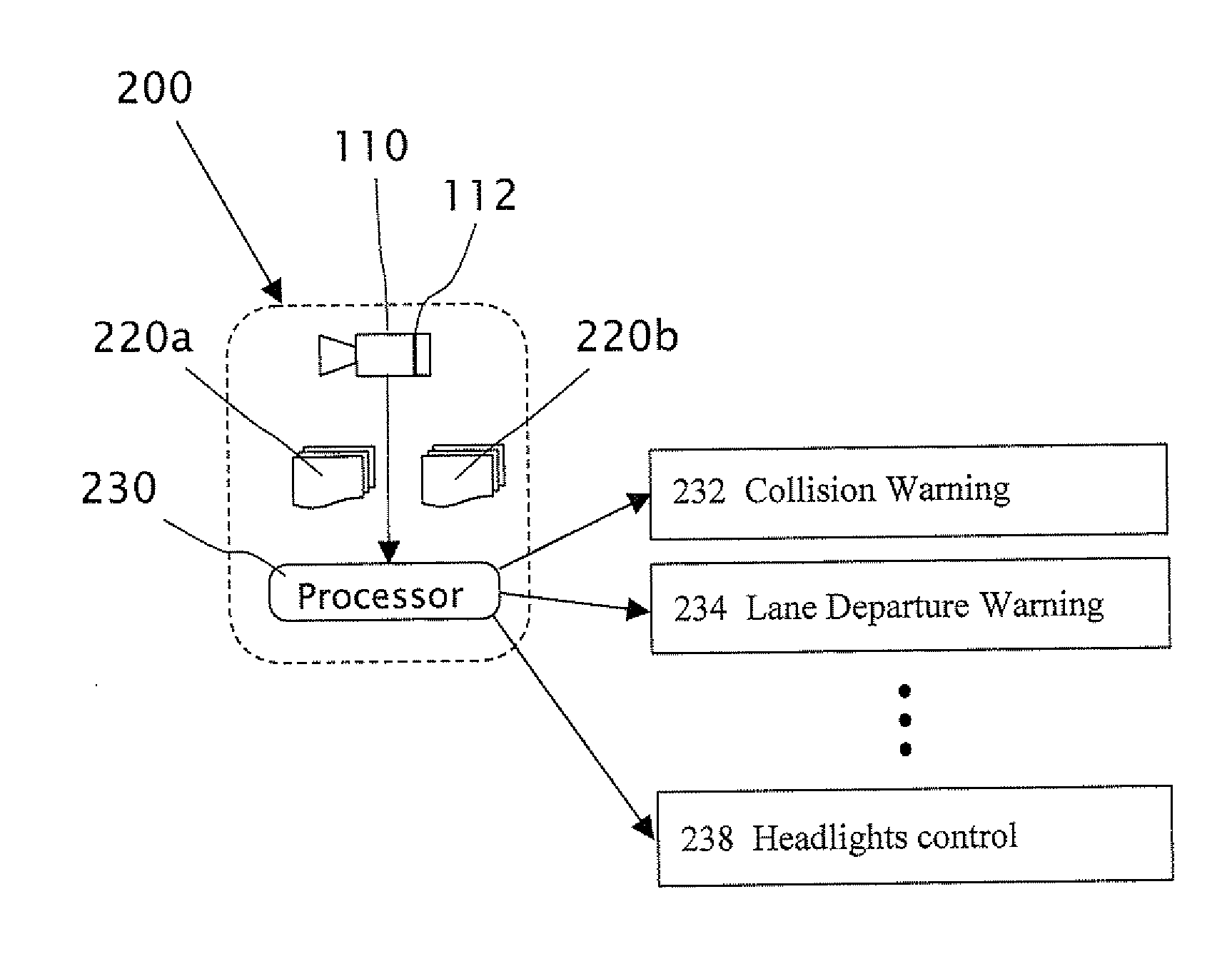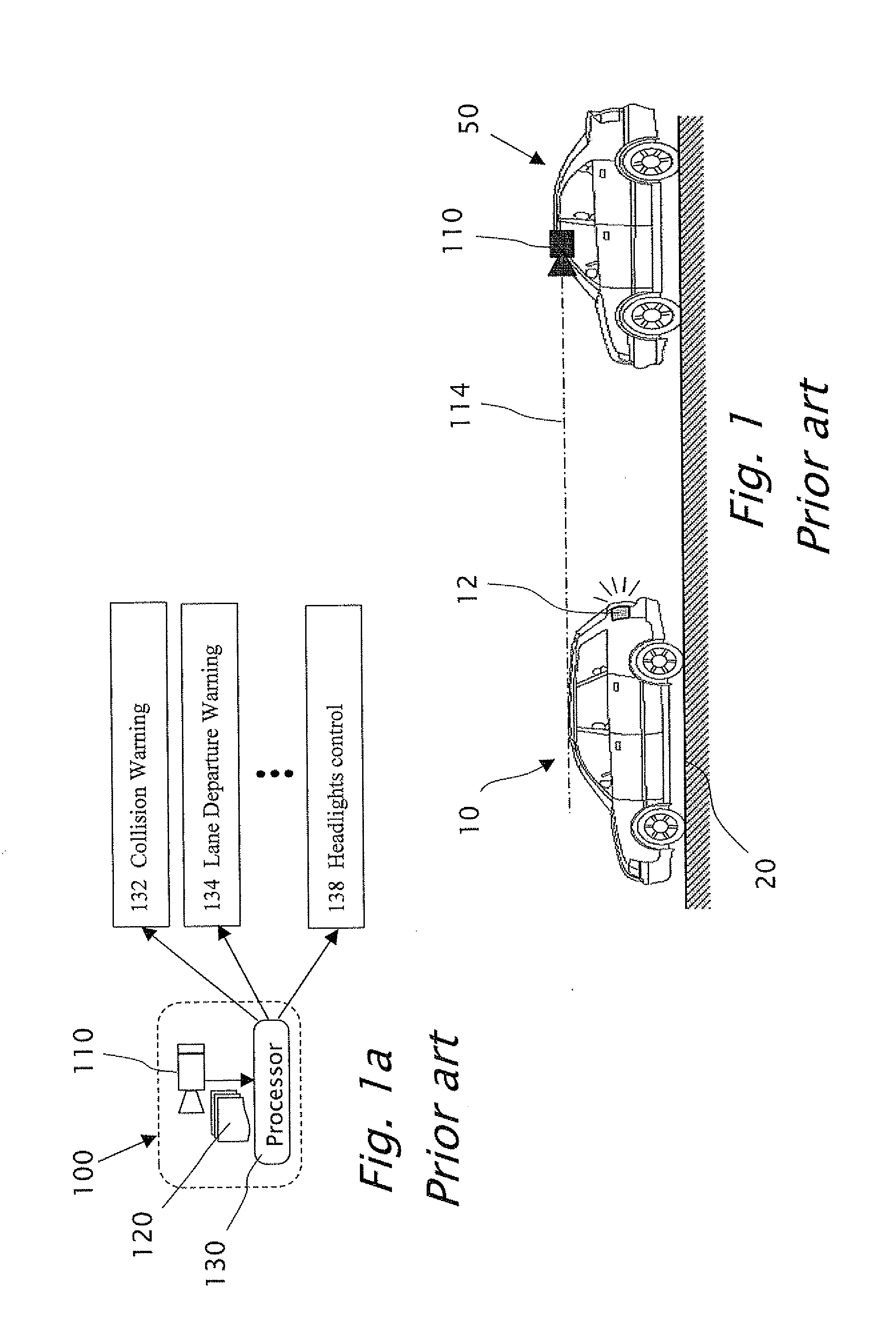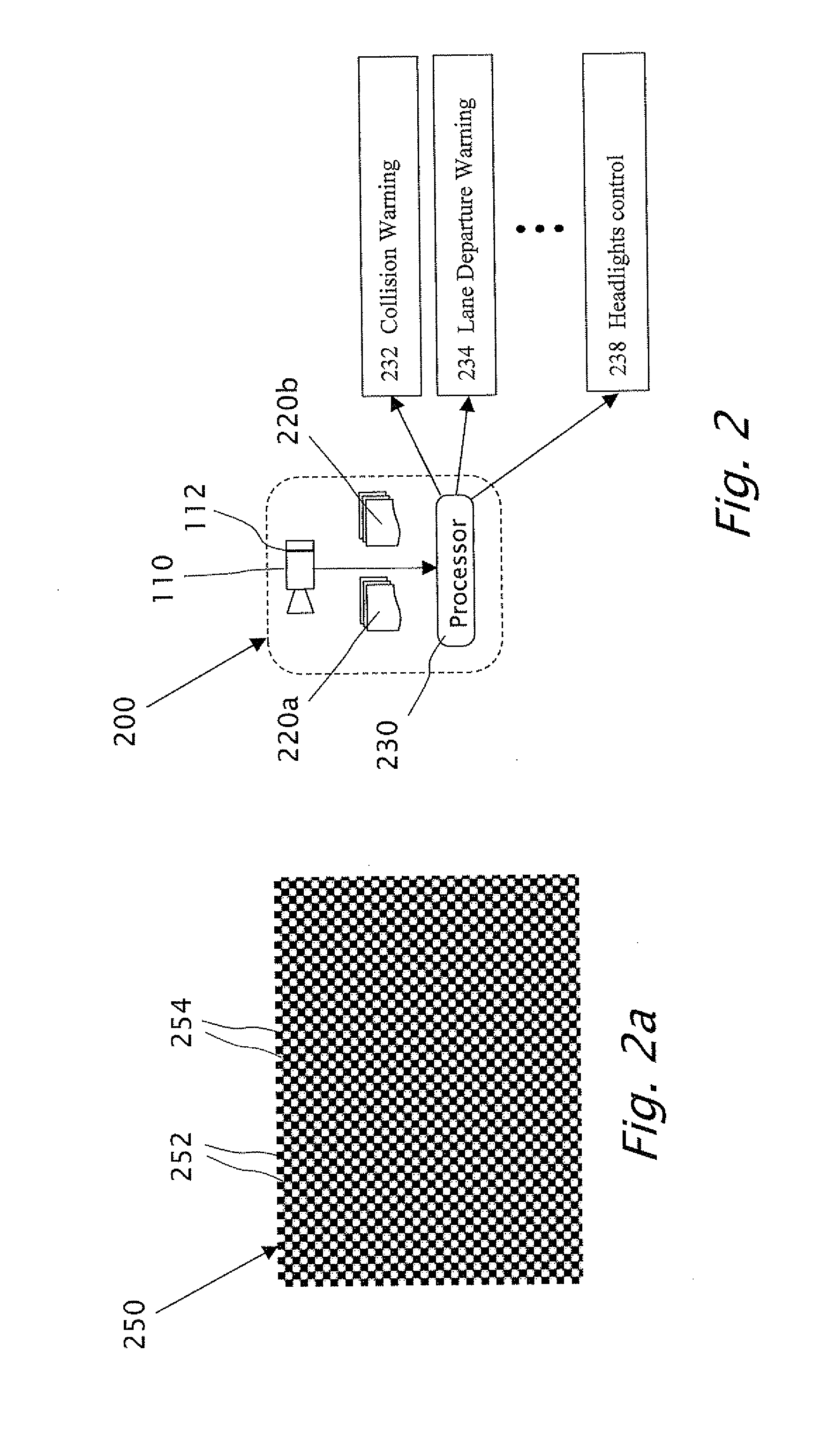Symmetric filter patterns for enhanced performance of single and concurrent driver assistance applications
a driver assistance and filter pattern technology, applied in the field of driving assistant systems, can solve the problems of reducing the performance of driver assistance applications, affecting the efficiency of camera settings between applications, and affecting the efficiency of driver assistance, so as to prevent the saturation of images
- Summary
- Abstract
- Description
- Claims
- Application Information
AI Technical Summary
Benefits of technology
Problems solved by technology
Method used
Image
Examples
Embodiment Construction
[0044] The present invention is an improved system mounted on a vehicle for performing LDW and AHC applications and possibly for performing other vehicle control and driver warning applications. The system includes a camera mounted inside the cabin and configured to acquire images of the road in front of the camera. In a dark environment, upon detecting a leading vehicle or oncoming vehicles the system switches the headlights to low beam, otherwise the system switches the headlights to high beam. The camera of the present invention includes a filter preferably with a checkerboard pattern, the checkerboard pattern being a red and clear filter combination. The checkerboard filter yields a pair of symmetric respective images: a clear image and a red image, whereas both images have substantially identical resolutions. The system of the present invention can use either the clear image or the red image as the primary image, to perform the warning and control applications, whereas the othe...
PUM
 Login to View More
Login to View More Abstract
Description
Claims
Application Information
 Login to View More
Login to View More - R&D
- Intellectual Property
- Life Sciences
- Materials
- Tech Scout
- Unparalleled Data Quality
- Higher Quality Content
- 60% Fewer Hallucinations
Browse by: Latest US Patents, China's latest patents, Technical Efficacy Thesaurus, Application Domain, Technology Topic, Popular Technical Reports.
© 2025 PatSnap. All rights reserved.Legal|Privacy policy|Modern Slavery Act Transparency Statement|Sitemap|About US| Contact US: help@patsnap.com



